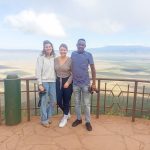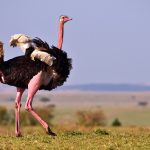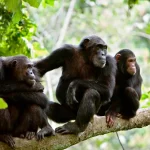
- Weathers on Kilimanjaro
-
Written by : Tarimo Expeditions
Weathers on Kilimanjaro: A Comprehensive Guide to Climbing Africa’s Highest Mountain
Mount Kilimanjaro is one of the world’s most magnificent natural wonders and the highest mountain in Africa. Situated in Tanzania, the mountain’s summit stands at an altitude of 19,341 feet, attracting climbers from all over the world. However, the journey to the top of Kilimanjaro is not an easy feat. Climbers have to deal with unpredictable weather conditions that change throughout the climb, making it a challenging and exhilarating experience. In this article, we will explore the different types of weather conditions that climbers face when climbing Mount Kilimanjaro.
Mount Kilimanjaro is a dormant volcano located in Tanzania, East Africa, and stands at an impressive 19,341 feet (5,895 meters). Climbing Kilimanjaro is a popular activity, and thousands of tourists come every year to experience the thrill of scaling Africa’s highest peak. However, Kilimanjaro’s weather is unpredictable, and it’s crucial to understand the weather patterns to ensure a safe and enjoyable climb.
Geographical Location of Mount Kilimanjaro
Mount Kilimanjaro is located in Northern Tanzania, close to the Kenyan border. It is part of the Kilimanjaro National Park and is approximately 200 miles south of the equator. Kilimanjaro’s location close to the equator affects its weather patterns, and the mountain’s height creates various temperature zones, each with its own unique weather conditions.
Climbing Seasons on Mount Kilimanjaro
Climbing Mount Kilimanjaro is possible throughout the year, but it’s crucial to understand the different climbing seasons to choose the best time for your climb. Kilimanjaro has three distinct climbing seasons:
High Season
The high season for climbing Kilimanjaro is from December to February and June to October. During this period, the weather is dry, and the skies are clear, making it easier to climb the mountain. However, the high season attracts many climbers, and the routes can be crowded.
Shoulder Season
The shoulder season for climbing Kilimanjaro is from March to May and November. During this period, the weather is unpredictable, with a chance of rain and mist. The shoulder season is less crowded, making it an excellent choice for climbers who prefer a quieter climb.
Low Season
The low season for climbing Kilimanjaro is from April to May and November to December. During this period, the weather is wet and misty, making it challenging to climb. However, the low season offers the most affordable rates and fewer crowds.
Weather Patterns on Mount Kilimanjaro
Understanding Kilimanjaro’s weather patterns are crucial to prepare for the climb. Here are the different weather conditions that climbers can expect when climbing Mount Kilimanjaro.
Average Temperatures
Kilimanjaro’s temperature varies with altitude. At the base of the mountain
, the average temperature is around 25°C (77°F), while at the summit, temperatures can drop to -7°C (19°F) or lower. Therefore, climbers need to prepare for drastic temperature changes during the climb.
Temperature Inversion
Temperature inversion is a common phenomenon that occurs on Mount Kilimanjaro. It happens when the temperature on the mountain’s slopes is higher than the temperature at the summit. During a temperature inversion, the mountain’s lower slopes are covered in mist, while the summit is clear, providing climbers with stunning views.
Rainfall
Mount Kilimanjaro’s weather is unpredictable, and it’s common to experience rainfall during the climb. The rain can last for hours or days, depending on the season. Climbers need to prepare for rain by packing rain gear and waterproof clothing.
Humidity
Humidity levels on Mount Kilimanjaro can be high, especially in the forest zones. The humidity levels can affect climbers’ comfort and increase the risk of dehydration. Therefore, it’s essential to stay hydrated and pack the necessary gear to stay dry.
Wind
Winds can be strong on Mount Kilimanjaro, especially at higher altitudes. Climbers need to prepare for windy conditions by packing warm clothing and wind-resistant gear.
The Importance of Proper Gear and Clothing
Proper gear and clothing are essential when climbing Mount Kilimanjaro. Climbers need to pack warm clothing, rain gear, and wind-resistant gear to prepare for Kilimanjaro’s ever-changing weather conditions. It’s also crucial to pack enough water and electrolytes to stay hydrated and prevent altitude sickness.
Preparing for Weather Conditions on Kilimanjaro
Preparing for Kilimanjaro’s weather conditions is crucial to have a safe and enjoyable climb. Here are some tips to help climbers prepare for Kilimanjaro’s weather:
Hydration
Climbers need to drink plenty of water to stay hydrated, especially at higher altitudes. It’s also essential to pack electrolyte supplements to replenish lost nutrients and prevent altitude sickness.
Sun Protection
Kilimanjaro’s high altitude and proximity to the equator make climbers more susceptible to sunburn. Therefore, it’s crucial to pack sunscreen, sunglasses, and a hat to protect against the sun’s harmful rays.
Weather Updates
Climbers need to stay informed about Kilimanjaro’s weather conditions to prepare adequately for the climb. Weather updates are available at the mountain’s base, and climbers can also hire local guides to provide weather updates during the climb.
Climbing Pace
Climbing Kilimanjaro requires a slow and steady pace to prevent altitude sickness and conserve energy. Climbers should take frequent breaks to rest and acclimatize to the altitude.
Acclimatization
Acclimatization is essential when climbing Kilimanjaro. Climbers need to spend a few days at high altitudes to acclimatize their bodies to low oxygen levels. Therefore, climbers should choose a route that allows for adequate acclimatization time.
Climbing Mount Kilimanjaro is a challenging but rewarding experience. However, Kilimanjaro’s weather conditions can be unpredictable, and climbers need to prepare adequately for the climb. By understanding Kilimanjaro’s weather patterns, packing the necessary gear and clothing, and preparing for weather conditions, climbers can have a safe and enjoyable climb to the top of Africa’s highest peak.
Best of Our Tanzania Safaris
From the Wildebeest Migration to the Big 5 and Tropical White Sand Beaches
Explore the best of Tanzania with our curated collection of safaris packages. Experience breathtaking wildlife, stunning landscapes and cultural richness, there’s something for everyone.



